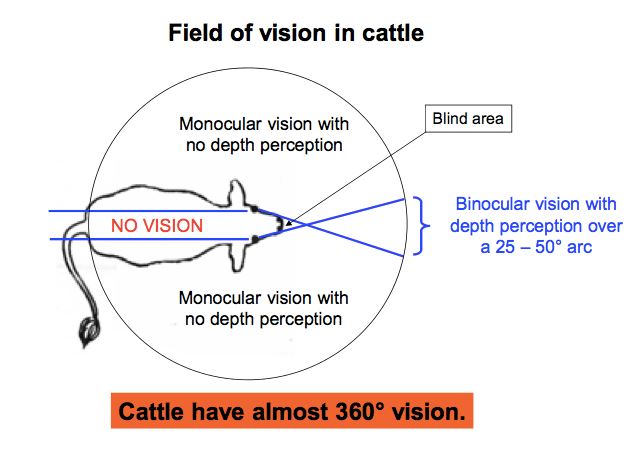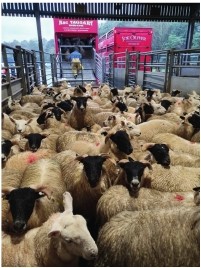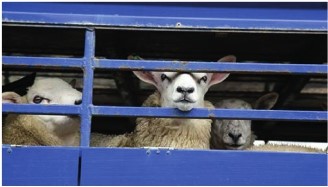Guide to Transporting Livestock
31 January 2024As a livestock keeper it is likely you will need to transport animals at some time or another. Like any farmer you will require to comply with the relevant legislation associated with transporting livestock. Farmers have a legal responsibility to ensure that their livestock are transported in a way that does not cause injury or unnecessary suffering.
This factsheet will explain the legal controls in place to protect livestock during transit – including details of how these rules vary depending on the distance travelled and the species of animal. Training requirements and the different document types, including certificates of competence and Animal Transport Certificates (ATCs) will also be covered to ensure that you are fully aware of what is required of you.
Good General Practice
- Thoroughly plan journeys and keep the duration to a minimum.
- Ensure that animals are fit to travel.
- Check animals regularly throughout journey.
- Ensure vehicle loading and unloading facilities are constructed and maintained so to avoid stress, injury and suffering.
- Ensure those handling animals are competent and do not use violence or methods likely to cause fear, injury or suffering.
- Provide sufficient floor space and height allowance in accordance with species space requirements.
- Provide water, feed and rest as needed.
Fitness for Travel
It is illegal to transport an animal or animals which are considered unfit for travel. Animals must be able to walk freely, be weight bearing on all four feet without pain or assistance. Animals not considered fit for travel include the following:
- Injured, ill, fatigued, with a severe open wound or prolapse.
- Very young animals – calves less than 10 days old, pigs less than three weeks old and lambs less than one week old (unless traveling under 62 miles).
- Heavily pregnant females – where more than 90% of the expected gestation period has passed (unless being transported for veterinary treatment).
- Females who have given birth in the previous 7 days.
- Newborn animals where the navel hasn’t completely healed.
- Calves less than 14 days old – If the journey is over 8 hours.
- Cervine animals in velvet i.e. deer newly growing antlers.
- Shorn sheep during cold weather (particularly November – March). For information on transporting animals in extreme temperatures see: https://www.gov.uk/guidance/keeping-farm-animals-and-horses-in-extreme-weather
Animal Behaviour and Handling
Most animals will be transported at least once in their lifetime. Animals can be stubborn and may not want to be loaded. Fear is a common stress factor for animals (which can arise from being loaded into a trailer or lorry and during transit) so it is extremely important to remain calm and patient when loading any animals.
There should be no need for contact with the animal. Giving them time and allowing them to move at their pace is key to successful loading. A top tip is to walk through the route yourself seeing it from the animal’s perspective.
When handling livestock there are a few ‘Golden Rules’ to consider which should make for an easier experience for both the stock and stock handler.
Golden Rules when Handling Livestock
- Avoid dead ends
- Only give one exit
- Avoid sudden and loud noises
- Avoid distractions
- Avoid sudden movements
- Ensure good lighting
- Avoid uneven and unstable footing
You will also need to consider cattle ‘Flight Zone’ and the animal’s field of vision when loading and unloading. Cattle ‘Flight Zone’ is similar to your personal space – it is the distance between you and the animal that you the handler must maintain for the animal to feel comfortable. When you enter this zone, the animal will move. Remember a dairy cow that is accustomed and well used to human contact and interaction on a daily basis will have a smaller flight zone than a beef cow.
Animal Handling 101: Cattle Field of Vision and Flight Zones

Important Points to Consider When Transporting Livestock
Driving
You should be mindful of your driving style while transporting livestock. Erratic driving will increase stress of the animals being transported, reducing welfare. You should aim to keep a smooth and constant driving style which will allow the animals to relax and maintain sure footing while in transit. Plan your journey before you set off and allow plenty time for the journey. A contingency plan should be in place to minimise the impact of unexpected delays or adverse road conditions.
Young Stock
For young animals limited distances apply of 100 km (62 miles) for lambs and goat kids less than 1 week old, calves less than 10 days old and piglets less than three weeks of age.
Bedding
As young stock (including piglets less than 10 kg; lambs less than 20 kg; or calves less than 6 months) are more susceptive to cold temperatures, bedding is required. All pigs under 30 kg must also be bedded on 8 – 12 hour journeys. Bedding is also a requirement if transporting lame animals for veterinary treatment or to slaughter.
Animal Separation
You will need to think about how animals are separated from others while in transit. Animals of different species are not advised to travel together (unless they have been raised in compatible groups, are accustomed to each other and separation would cause distress). The same is said for animals which are significantly of a different size and age, and those which have or do not have horns.
Sexually mature males should be kept separate from females and tied animals should not share the same space as loose animals.
Space Requirements
It is important that you familiarise yourself with the space requirements for the different species of livestock as these vary from species to species. Animals require adequate space to stand in a natural position. There also needs to be room for them to lie down if necessary. It is important that animals are transported in the correct size of pen/trailer to avoid overcrowding and under crowding (which can lead to animals being ‘thrown about’ during transit).
You will find information on space allowances and journey times for the different species at:
QMS - Livestock Transport Book
Movements and Traceability
Sheep
Sheep will require a SAMU document. When an animal moves, its movement must be recorded in the movement document and then reported to the Scottish Animal Movement Unit (SAMU) within 3 days of arrival at the holding by the receiving keeper; moves that take place via a livestock market in Scotland will be notified to SAMU by the Market. It is essential that the SAMU database holds information on the actual locations of sheep and goats. Please ensure that you provide the CPH of the actual location the sheep or goat moves from or to.

All movements from a holding in Scotland (except those for emergency veterinary treatment) must be accompanied by a movement document. These are in triplicate form and issued by the Scottish Government (copies of MDs can be obtained from your local RPID office). Markets will issue their own version of a movement document which includes all of the required information. This must accompany the animals from the market to the next location. If you are a keeper removing animals from a market you must supply the market with the destination and haulier details.
For non-market moves departure keepers, those transporting animals and receiving keepers, are all responsible for completing their appropriate section of the movement document. In some cases this may be the same person. Currently each keeper should complete the movement document as follows:
Departure location keeper - before the animals begin their journey you must enter the following details on the movement document:
• CPH of the departure location;
• departure address;
• name and address of the keeper;
• date of departure;
• number of animals being moved;
• CPH or address of the receiving location;
• signature of the keeper.
The individual number must be recorded on the movement document for moves to shows and for the movement of rams or goats to another holding for breeding purposes.
Once the haulier/transporter has completed the haulage details, the pink copy of the movement document must be retained by the departure keeper for 3 years and be available for inspection if required.
Transporter/Haulier - before the journey commences the Transporter/Haulier must enter the haulage details on the movement document. The white & yellow copy of the movement document or market movement document must accompany the animals on the journey. On arrival at the destination, these must be given to the receiving keeper.
Receiving location keeper - you must check that the information about the number of animals moved and the destination details on the movement document received are correct. All moves that take place out with a market must be notified to SAMU within 3 days by the receiving keeper. If the animals have come direct from a market, you must notify SAMU within 3 days of any amendments. The date of arrival and the keeper's signature must be added. The yellow copy of the movement document must be retained by the keeper for 3 years and be available for inspection if required.
Make sure to complete ALL of the details required on the Movement Document and to record movements in your flock register.
Notification to SAMU
The movement document forms the basis of the notification to SAMU. The white copy of the movement document can be either posted or faxed to SAMU. You can also complete electronic notification of the movement details. SAMU staff will be happy to answer queries relating to notification of movements and can be contacted using the details below:
Contact details for SAMU
Post:
SAMU
Government Buildings
161 Brooms Road
Dumfries
DG1 3ES
Tel No: 0845 6017597
Fax No: 01387 274457
E-mail: samu@scotland.gsi.gov.uk
Moves within the UK
Moves to Scotland from England, Wales, and Northern Ireland will be accompanied by a movement document required by the legislation in that country. The receiving keeper in Scotland should action these as they would a Scottish movement document. Scottish movement documents should be completed for moves into England, Wales and Northern Ireland.
Cattle
For cattle they must move with their paper passport and the relevant movement document (i.e. food information form if travelling to a slaughter house). If your stock are not moving through a Critical Control Point (CCP) e.g. a mart or abattoir then you will need to make sure that the movement is recorded through ScotMoves+ (cattle).
It is mandatory to retain copies of all movement documentation for future reference.
Training and Competence Certification
Any individuals involved in the transportation of animals by road on journeys over 65 km as part of an economic activity are required to hold a Certificate of Competence (CoC), which is an independently assessed qualification. This allows you to meet the EU Regulation and Welfare of Animals (Transport) (Scotland) Order 2006.
If the journey is less than 65 km then the individual still needs to comply with the livestock transport legislation but a CoC is not required. On the job training and practical experience to gain the relevant skills is sufficient and training should cover the following:
- Fitness for travel
- Means of transport and use of its facilities
- Loading, unloading and handling
- Watering and feeding intervals
- Journey times and rest periods
- Space allowances
- Documentation
However for journeys over 65 km (40 miles) the procedure for gaining the CoC differs depending on the duration of the journey:
- Short journeys (under 8 hours) require a theory based multiple choice test which can be carried out online.
- Long journeys (over 8 hours) also require a practical “on the road” assessment in addition to the theory test being passed.
Once the relevant CoC is obtained, it is valid for life (and so is similar to a driving licence in that respect). The qualification is species specific e.g. cattle, sheep, goats, pigs, poultry, horses, game birds. It covers the legal requirements, journey planning, vehicle suitability, fitness to travel, causes and signs of stress in animals, space allowances, stocking densities, handling and animal welfare in transit and post journey requirements.
There is also a requirement for any business transporting animals as part of an economic activity for journeys over 65km to hold a valid Transporter Authorisation (in addition to their individual drivers holding the relevant CoC). This will apply to any livestock haulage business as well as an individual farming business. Again, the type of Transporter Authorisation required depends on the duration of the journey:
- Type 1 Transporter Authorisation – required for journeys under 8 hours.
- Type 2 Transporter Authorisation – required for journeys over 8 hours.
For businesses carrying out a mixture of both short and long journeys (in terms of time), only the Type 2 Transporter Authorisation is required which covers both scenarios. Both Transporter Authorisations were introduced in January 2009 and require renewal every 5 years.
For more information please see the following document from Scottish Government:
If you require a CoC you should contact your local NPTC City & Guilds Assessment Centre www.nptc.org.uk or Lantra Awards training provider www.lantra.co.uk who can assist in arranging this assessment for you.
Hot Weather
Prolonged periods of hot weather are becoming more common in the UK due to climate change, therefore it is now recommended that livestock should not be transported when external temperatures are more than 30°C. Where humidity is also high, the ‘feels like’ temperature on phone/web-based weather tools can also be used as an indicator of whether transport should happen or not. When transporting livestock in hot weather there are a number of measures you can take including:
- Not moving animals during the hottest part of the day - could the animals be moved in the evening or early morning when it’s likely to be cooler?
- Handle animals to a minimum during loading and unloading.
- Increase space allowance by 30% (this is particularly important in the hotter sections of the float i.e. the front compartments and high levels).
- Avoid penning stock in the hotter areas of the float/trailer.
- Improve ventilation – maximise air space by increasing internal height by removing tiers and folding decks.
- If you need to stop, park in the shade and make use of any prevailing wind.
- Plan your journey in case of delays or road closures etc.
- Check animals more frequently – looking for signs of heat stress (open mouthed breathing/panting, high respiratory rate & sweating).
Extreme Cold Weather
No threshold for extreme cold weather has been set, but generally a review should be undertaken when external temperatures are below 5°C. Checking the ‘feels like’ temperature on phone/web-based weather tools also gives and indication of the impact on wind chill factor for determining if additional measures are required for transporting livestock in extreme cold weather including:
- Adding more bedding.
- Adjusting ventilation opening to minimise wind chill.
- Checking animals more frequently – look for signs of cold stress (lethargy, shivering & huddling).
Sign up to the FAS newsletter
Receive updates on news, events and publications from Scotland’s Farm Advisory Service

